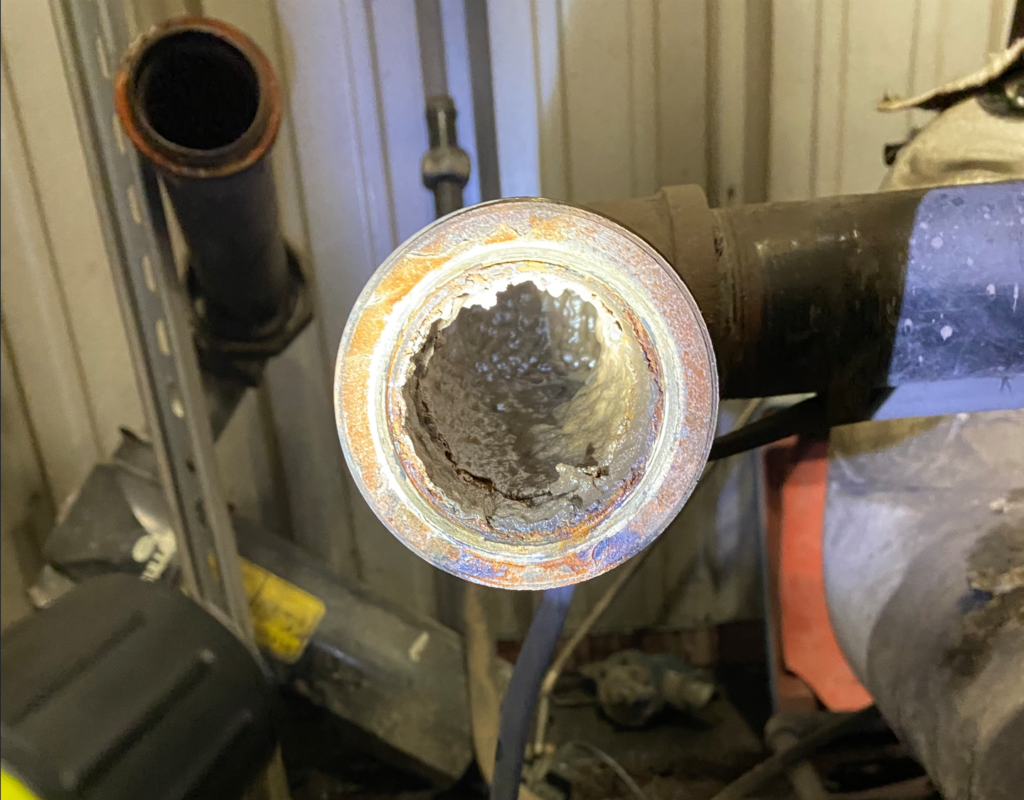The typical piping installed in industrial plants and shops is made of steel, and as a result may be subject to rusting and contamination. Fig. 1 and 2 show what was found at a heavy industrial plant with the air compressors taking in polluted air.

Rusting and contamination in compressed air system piping can lead to a variety of issues that affect both system efficiency and the quality of the compressed air. Rust buildup inside the pipes restricts airflow, causing pressure drops that force the system to work harder, resulting in increased energy consumption. The contaminants, including rust particles, can clog filters, valves, and other components — reducing the overall performance of the system. Over time, this can lead to more frequent maintenance needs and higher operating costs, as the system struggles to maintain efficient performance.

In addition to inefficiencies, rust and contamination can cause significant damage to equipment. As rust wears on components like air tools, cylinders, and valves, it reduces the equipment lifespan, leading to premature failures. Corrosion also compromises the integrity of pipes and fittings, increasing the risk of air leaks, which waste energy and reduce system reliability. This damage not only shortens the lifespan of equipment but also increases the frequency of repairs and replacements, driving up operational expenses. Plus, the presence of rust and other contaminants can degrade air quality, which is especially problematic in industries that require clean air for manufacturing, such as food, pharmaceuticals, and electronics.
Finally, rust contamination presents potential safety hazards. Corroded pipes can rupture, causing dangerous high-pressure air releases that can harm workers. In applications where compressed air is used for breathing, such as in SCBA units for firefighters, the presence of rust and contaminants poses a serious health risk. These issues can lead to unexpected equipment failures, causing costly production downtime and risking product quality or safety. To prevent these problems, it’s essential to implement regular maintenance, proper filtration, and consider using corrosion-resistant materials in compressed air systems.
It is important to inspect the internal piping in compressed air systems should you suspect problems with corrosion. You may receive a surprise.
Filed Under: Air Compressors, Air Preparation, Components Oil Coolers, Compressed Air Technologies, Pneumatic Tips, Technologies